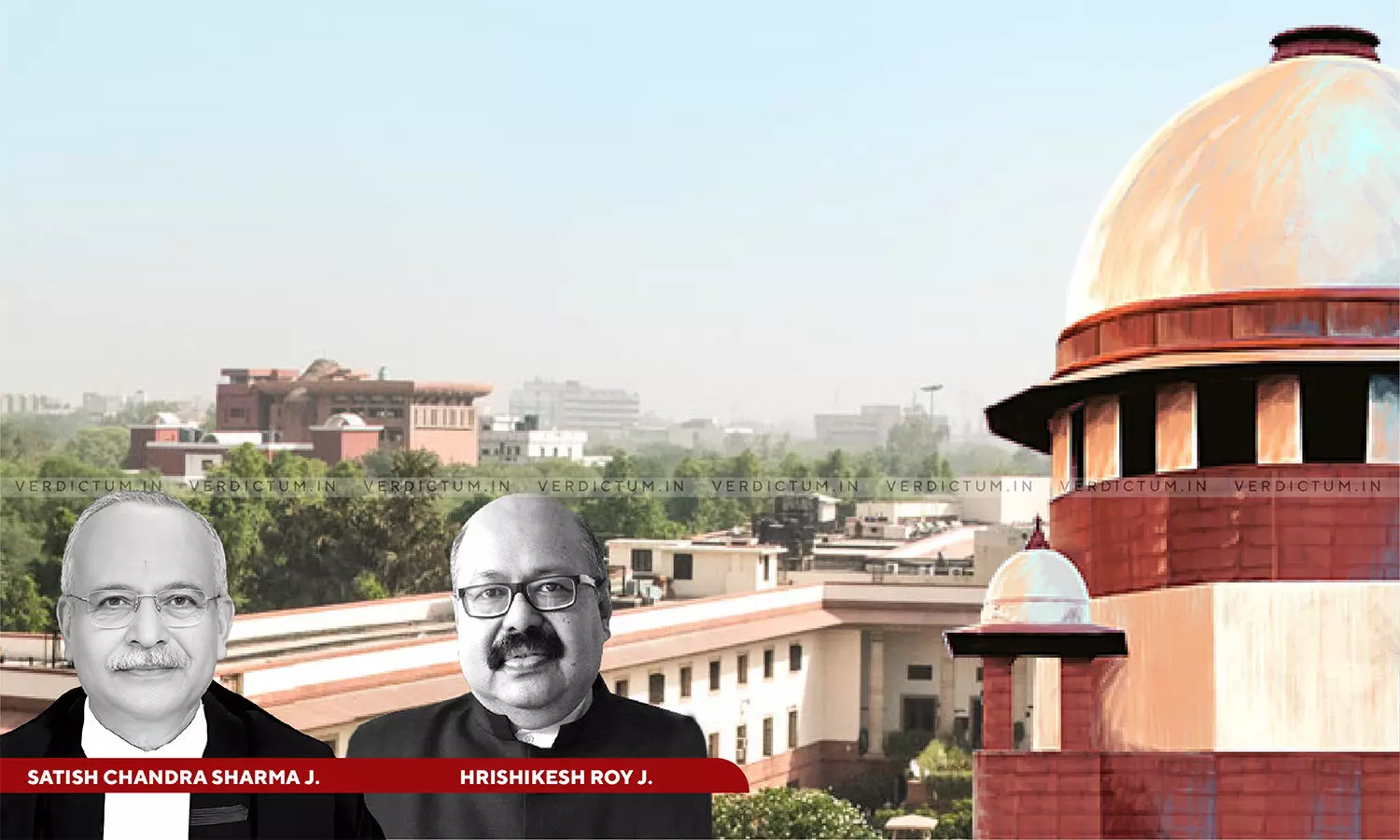
Common Intention Per Se May Not Attract S. 34 IPC Without Action In Furtherance Of Intention: SC Explains Difference Between 'Common Object' U/s. 149 IPC And 'Common Intention'
 |
|The Supreme Court, while acquitting persons in a murder case, has observed that the mere common intention per se may not attract Section 34 of the Indian Penal Code(‘IPC’) without action in furtherance of such common intention. The Court has also explained the difference between "common intention" under Section 34 and "common object" under Section 149 of the IPC, in a case where the Trial Court altered charge from Section 149 to Section 34 of the IPC.
An Appeal was filed before the Supreme Court challenging the judgment passed by the Madhya Pradesh High Court which upheld the judgment of conviction passed against the Appellants convicted under Sections 302, 307 and 323 read with Section 34 of the IPC.
The Bench of Justice Hrishikesh Roy and Justice Satish Chandra Sharma observed, “While it is true that it is permissible for Courts to alter charges, it can only be done by careful analysis of evidence in the case. It is most essential to identify the ingredients of “common intention”, before implicating any accused with the aid of Section 34 IPC. The existence of common intention in a given case must necessarily be established by the Prosecution with relevant evidence. The Court also has the responsibility to analyze and assess the evidence before convicting a person with the aid of Section 34 of the IPC. Importantly, a mere common intention per se may not attract Section 34 IPC without action in furtherance of such common intention.”
Advocates Awadhesh Kumar Singh and R K Kapoor appeared for the Appellants while AAG Nachiketa Joshi appeared for the Respondent.
The brief facts of the case are that one the evening of July 1998, Mohan (PW) heard a commotion while dining at home. He saw the Appellant- Ram Kripal, Babbu, Sanjay, Madhusudan, and Rampratap, armed with swords, knives, and lathis. They confronted Kishan over his brother's alleged public urination. Despite Kishan's apology, the Appellant continued to abuse him. Ram Kripal attacked Kishan, injuring his chest. When Mohan, Gopal (the deceased), Murliram (PW), and Kanhaiyalal (PW) intervened, Ramprakash and Babbu inflicted severe injuries on Gopal, while Madhusudan injured Mohan. Kanhaiyalal and Murliram were also harmed.
The Court held, “We have given our thoughtful consideration to the contentions raised by the respective counsel. Before examining the facts, a reiteration of the significant distinction between “common object” and “common intention” would be apposite. Both the trial Court as well as the High Court, it is seen, had mechanically applied Section 34 in place of Section 149 without any discussion on this aspect. The trial court has equated “common object” with “common intention”, while analyzing the role of the accused and failed to give any reasons in support of the altered conviction.”
The Court reiterated the distinction between “common object” and “common intention” and observed, “There is a significant distinction between Section 34 and Section 149 of IPC. Section 34 requires active participation and prior meeting of minds whereas Section 149 assigns liability merely by membership of an unlawful assembly and has a wider scope than Section 34 IPC.”
The Court also relied upon its judgments in Virendra Singh v. State of M.P (2010), Chittarmal vs. State of Rajasthan(2003), Mala Singh v State of Haryana (2019) and Rohtas v. State of Haryana (2021).
The Court said that while altering the charge from Section 149 to Section 34 of the IPC the trial court omitted to furnish any reasons and when the charge under Section 149 IPC was dropped, the trial Court decided to conveniently alter the charge and with the aid of Section 34 of the IPC, ordered for conviction of the Appellants under Sections 302, 307 and 323 of IPC respectively.
It further noted, “In the present case, the accused could not be treated to be members of any unlawful assembly for attraction of vicarious liability for all the members of the unlawful assembly, for acts done in common object. Therefore, in order to sustain the conviction with the aid of Section 34 of the IPC, the Prosecution was required to establish common intention of the accused. Unfortunately, the common intention of the appellants was never established by the prosecution to connect them with the crime charged. Moreover, there was no discussion by the Court on the aspect of common intention.”
Accordingly, after noting the deficiencies in the prosecution case, the Court allowed the appeal and acquitted the Appellants.
Cause Title: Madhusudan & Ors. v. The State of Madhya Pradesh
Appearances:
Appellants: Advocates Awadhesh Kumar Singh, R K Kapoor Asha Upadhyay, AORs V. N. Raghupathy, Kheyali Singh, Advocates Gyanendra Kumar Pandey and Krishna Joshi.
Respondent: AAG Nachiketa Joshi, AOR Sunny Choudhary and Advocate Mrigna Shekhar